Uneven bits on the surface and edges of the materials are referred to as burrs. Deburring is the process by which edges or ridges of machined parts and other objects are neatened or smoothed. The term “deburring equipment” refers to all of those machines that carry out this process. Read More…
OTEC Precision Finish, Inc. is a world-class supplier of mass finishing equipment and supplies. Our primary products include centrifugal disc, drag and stream finishing machines to meet all of your deburring, polishing, grinding and honing requirements.
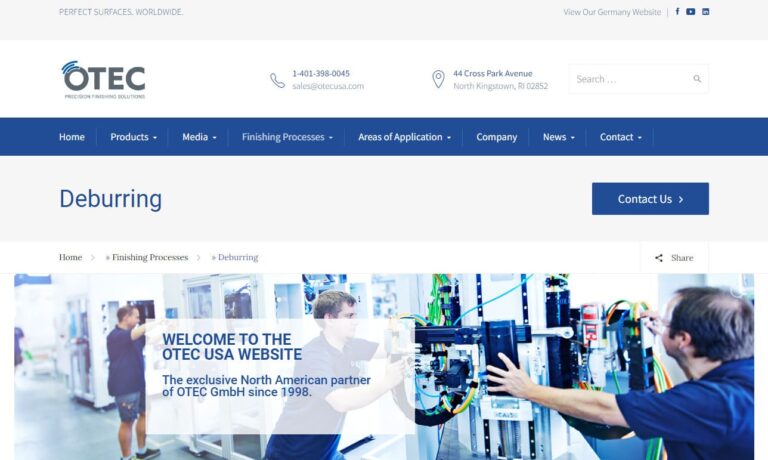
Raytech Industries specializes in the manufacturing and sales of high-quality metal finishing equipment. Raytech offers vibratory tumblers, magnetic finishers, parts separators, finishing compounds, and finishing media. Raytech is an American-owned company and has been serving the needs of the industry since 1958 through our quality and innovative products.
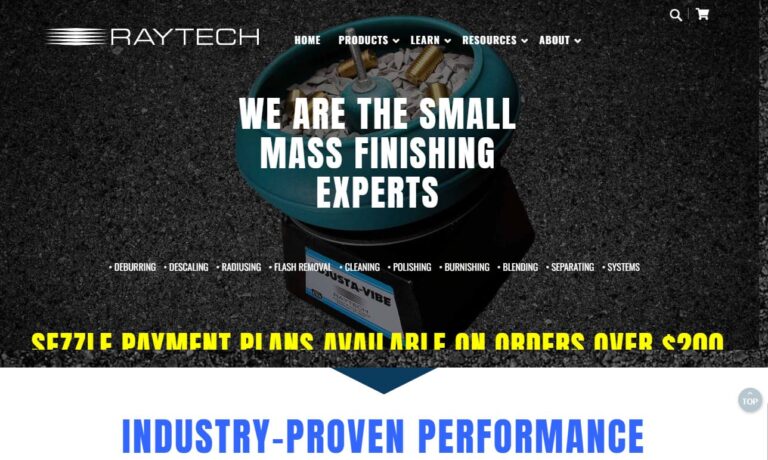
Great Lakes Finishing Equipment, Inc. is a leading supplier of the deburring equipment, machines, and supplies for all your mass finishing projects. This equipment includes continuous systems, vibratory bowls, tubs, and high energy centrifugal barrel machines. Let our deburring specialists work with you to find the best deburring machinery for your project.
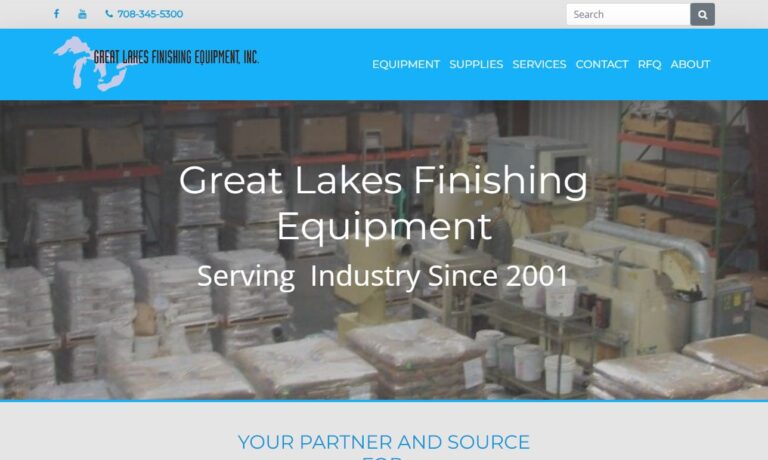
The Deburring Company is committed to providing superior service by using today's innovations to produce the highest quality product in a safe and efficient environment. The Deburring Company conforms to the ISO 9001-2000 requirements and implements continuous improvement efforts to ensure customer satisfaction.

More Deburring Machinery Manufacturers
Uneven bits on the surface and edges of materials are called burrs. Deburring is the process of smoothing or neatening these edges or ridges on machined parts and other objects. The term “deburring equipment” encompasses all machines used for this process. Various materials, including ferrous and non-ferrous metals, sheet metal (especially steel), wood, and plastic, often require deburring. This process is common in industrial manufacturing and is essential in electronics, building construction, automotive, aviation, and medical device production. Deburring machinery is generally needed after molding, forging, stamping, drilling, or machining.
Applications
Deburring equipment is widely used across various industries to enhance the quality and functionality of manufactured components. In the automotive sector, precision is essential for engine and transmission parts, where any burrs or sharp edges can negatively affect performance and reliability. Deburring equipment ensures these components are free from imperfections, resulting in improved efficiency and vehicle safety. In the aerospace industry, where parts are exposed to extreme conditions, deburring is crucial for maintaining structural integrity and enhancing aerodynamics. By removing burrs from critical aircraft parts, the risk of stress concentrations and potential failures is reduced.
The electronics industry depends heavily on deburring equipment to produce flawless and reliable electronic components. Eliminating burrs and sharp edges from delicate circuit boards and electronic parts prevents damage during assembly and installation, reducing the chances of malfunctions or short circuits. In medical device manufacturing, where precision and safety are of utmost importance, deburring equipment ensures that surgical instruments and medical implants are smooth and free from rough edges that could cause tissue damage or infection.
Deburring is a vital step in metalworking that enhances the overall quality and safety of fabricated parts. For example, in sheet metal fabrication, deburring removes sharp edges that could cause injury during handling or assembly. It also improves the surface finish, allowing for better paint adhesion or further processing.
Regardless of the industry, deburring equipment significantly contributes to the performance, longevity, and customer satisfaction of the final product. By consistently and precisely removing burrs and imperfections, manufacturers can ensure the high quality and reliability of their products, leading to increased consumer trust and improved market competitiveness.
History
Deburring targets imperfections known as burrs, which arise from machining processes. The first burrs likely emerged when humans began machining metal during the Bronze Age. The earliest records of deburring date back to ancient Egypt, around 2100 BC, where grinding wheels on lathes were used. Both ancient Egyptians and Chinese used tumbling barrels filled with stones to smooth jewelry and finishes, a method now known as tubbing, barrelling, or rattling.
In medieval times, various societies deburred their metal products. During the 1100s and 1200s, jousters had apprentices tumble chainmail armor in casks filled with ragged rocks. In 1225 China, innovators created sandpaper-like materials by coating paper with natural gum and crushed seashells. Europeans documented using sandpaper in 1769 in Paris. Wood engravings from the 1500s show guild members grinding scissors and knives with grindstones. In 1620, Pilgrims brought grindstones, early machines for removing burrs and sharpening edges, to the New World.
With the Industrial Revolution in the 1700s, advanced machining methods led to more common burrs, prompting inventors to develop better deburring methods. Initially, commercial deburring relied on tumbling, while precision deburring for items like watches or gear teeth was done by hand. The term “deburring” appeared in the English dictionary in 1943. From the 1940s onward, scientists and engineers improved deburring media, with American engineers producing the first synthetic media around 1953. German engineers in the ’50s developed instruments to measure burrs, leading to modern deburring equipment like vibratory barrels and tubs.
By the late ’50s and early ’60s, innovations included internal separation for vibratory tubs, plastic media, and centrifugal barrels for dry deburring. By 1960, manufacturers used liquid compounds and round vibratory machines. The ’60s and ’70s saw significant advancements, including new media materials and shapes, deburring machines for wet and dry processes, and the formation of committees for deburring standardization. Today, the deburring industry is more efficient and diverse than ever.
How It Works
Deburring equipment utilizes various techniques to remove burrs and imperfections from machined or fabricated components efficiently. One common method is mechanical deburring, which employs abrasive tools like brushes, abrasive belts, or grinding wheels. As components pass through the machine, the abrasive action shaves off the burrs, resulting in smooth edges and surfaces. Thermal deburring, in contrast, places components in a closed chamber filled with an explosive gas mixture. An electrical spark ignites the gas, causing a controlled, localized explosion that quickly burns away the burrs without damaging the main part. This process is particularly effective for intricate components and hard-to-reach areas.
For smaller and more delicate components, vibratory or tumbling deburring machines are preferred. These machines use a mixture of abrasive media, such as ceramic stones or plastic chips, along with the components in a vibratory or tumbling motion. This gentle agitation ensures thorough deburring without compromising the parts’ integrity. When precision is critical, ultrasonic deburring is employed. This method uses high-frequency vibrations transmitted through a liquid medium to dislodge burrs from tight spaces and intricate geometries, making it especially useful for components in the electronics and medical industries where fine details require meticulous deburring.
The versatility of deburring equipment lies in its ability to meet various industries’ unique requirements, ensuring the production of high-quality, safe, and reliable components. These machines not only enhance the performance and longevity of manufactured parts but also improve operational efficiency and customer satisfaction across a wide range of applications. As technology advances, deburring equipment continues to evolve, offering even more innovative and precise solutions to meet the demands of modern manufacturing processes.
Types
Below, we categorize various types of deburring equipment based on their fundamental operation and provide a brief explanation of each deburring method. Mechanical deburring equipment uses physical motion and abrasives to remove burrs, while abrasive deburring equipment, such as sandblasting, relies on high-pressure blasting with abrasive media. Wet and dry deburring equipment differ in their use of a liquid medium during the deburring process. Thermal deburring is unique, relying on controlled explosions to remove burrs. Electromechanical deburring equipment integrates electric controls with mechanical deburring methods. Centrifugal deburring machines use high-speed rotation for deburring, while non-abrasive deburring equipment, such as ultrasonic and polishing machines, employ specialized techniques for finishing components without abrasive media.
Rotational Tumblers (Mechanical Deburring)
Rotational tumblers are barrels that spin or rotate to mimic natural erosion. Inside the barrels are parts and Deburring media. The movement causes friction, which ultimately deburrs and/or polishes the parts. Tumblers work with a wide range of products.
Vibratory Tumblers (Mechanical Deburring)
Vibratory tumblers, also known as vibratory finishers, polish and grind away burrs through vibrations. This process, called vibratory finishing or mass finishing, is similar to barrel tumbling but allows users to view progress without stopping the machine. They often feature complex vibrating sections and conveyor systems.
Parts Tumbler (Mechanical Deburring)
Parts tumblers are similar to rotational tumblers but are typically larger and specifically designed for mechanical parts, both metal and plastic. They tumble media and parts together, deburring, polishing, and finishing them.
Electrochemical Deburring Equipment (Thermal Deburring)
Electrochemical deburring (ECD) is a newer technique that uses controllable electrical energy to deburr selected areas rather than entire parts. It washes away the deburred material using pressured electrolytes, allowing for precise deburring without thermal or mechanical stress. ECD requires clean, conductive surfaces and is ideal for materials that cannot be scratched or altered otherwise.
Polishing Machine (Ultrasonic Deburring)
Polishing machines, also known as polishing equipment, go beyond regular deburring to polish parts. They can be incorporated into various deburring machinery types, including vibratory tumblers and handheld filers and sandpapers.
Sandblasting Equipment (Abrasive Deburring)
Sandblasting equipment deburrs by blasting sheet metal parts with media such as small ceramic pieces or walnut shells for softer plastics.
Parts Washers (Wet Deburring)
Parts washers are deburring machinery that eliminate unwanted burrs from materials. Advanced deburring machines can also polish parts, ensuring they are ready for smooth functioning by filling up flaws and spots.
Contact Drum (Mechanical Deburring)
A contact drum is a rubber drum with an abrasive belt around it. It rotates along with the machine’s belt and brush. The contact drum’s soft, smooth, and flexible material ensures efficient cleaning.
Wet Deburring Machine (Wet Deburring)
Wet deburring machines use a coolant through a filter to catch and remove dirt and particles from parts. Some machines have their own filtering system, while others require an external one.
Dry Deburring Machine (Dry/Thermal Deburring)
Dry deburring machines are low maintenance and durable but may leave particles on the machine’s surface. They should be used carefully under expert supervision.
Centrifugal Disc Machine (Electromechanical Deburring)
Centrifugal disc machines, also known as centrifugal disc finishers, consist of a barrel-like chamber and a spinning disc. To deburr parts, place them inside the chamber with abrasive media and turn on the machine. Centrifugal finishing is faster than vibratory and tumbler methods and is ideal for small medical devices or automotive parts.
Manual Deburring
Manufacturers may also use manual deburring techniques, applying abrasive compounds to a surface via rubber wheels or abrasive nylon filament cloth and brushes.
Equipment Components
Common components of deburring equipment include deburring media, vibratory bowls, brushes, belts, barrels or tumbling containers, robotic technology, and a power source.
Deburring Media
Deburring media consist of abrasive materials designed to smooth surfaces without damaging unintended areas. They can be either wet or dry. Typical materials include silica ceramic, synthetic plastics like polycarbonate and acrylics, and natural substances such as corn cob and walnut shells.
Ceramic media is the most commonly used, known for its high abrasiveness suitable for hard metals like stainless steel. It comes in various pre-formed shapes like triangles, cylinders, cones, ellipses, and wedges. Synthetic plastic media, like polycarbonate and acrylics, is less abrasive and is used for softer materials such as aluminum. Plastic media, also available in wet forms, is ideal for tumbling processes. Corn cob media offers a clean and environmentally friendly option, providing fine finishes and absorbing challenging substances like dirt and oils from softer metals.
Deburring Brushes
These brushes are attached to machines to precisely remove unwanted edges and imperfections. They are made from robust materials such as nylon abrasive filaments and are particularly effective for deburring flat-surfaced parts with cavities, slots, or holes.
Benefits
Smooth Functionality
By eliminating surface burrs, you ensure that your machines and processes operate smoothly, meeting your production demands effectively.
Cost Savings
Irregularities in material quality can disrupt production cycles, leading to increased production costs. Poor material quality also results in rejected products. Deburring machines effectively remove burrs, enhancing material quality and streamlining production, reducing costs, and improving profit margins.
Put an End to Wearing and Corrosion
Certain deburring machines apply a protective coating to material surfaces. This coating acts as a barrier, enhancing material durability and resistance to wear, tear, and corrosion.
Design and Customization
When choosing or designing a deburring system for your specific needs, manufacturers take into account several key factors. These include the desired finish of the parts (whether highly polished, coated, shiny, smooth, etc.), the operational environment of the machine, the material composition of the parts to be deburred, the extent of burring present, as well as the size, shape, and volume of parts to be processed. Additionally, considerations such as equipment utilization frequency and volume capacity (measured in cubic feet) play a crucial role in selecting the appropriate system.
Suppliers often offer customization options to tailor deburring machines to specific applications. They can engineer equipment capable of handling multiple tasks, including applying coatings to achieve smoother and shinier metal finishes. Some machines employ techniques like rubbing similar materials together to remove fine, soft bits, while others utilize sanding to eliminate unwanted imperfections. In certain cases, additional processes such as painting or coating may be employed to achieve desired final finishes.
Safety and Compliance Standards
In the United States, the safety and compliance standards for deburring equipment are primarily set and enforced by governmental agencies, with contributions from non-governmental organizations. The Occupational Safety and Health Administration (OSHA) is pivotal in ensuring workplace safety, particularly in the use of industrial machinery such as deburring equipment. OSHA establishes guidelines, standards, and regulations that manufacturers and employers must follow to ensure safe operation and maintenance of deburring machinery.
Additionally, the American National Standards Institute (ANSI) plays a crucial role in developing voluntary consensus standards across various industries, including manufacturing. ANSI standards provide guidance on safety practices, design specifications, and performance requirements for deburring equipment, complementing mandatory OSHA regulations.
States may also have their own agencies and regulations for workplace safety. These state-level entities often adopt OSHA standards and may impose additional requirements tailored to local needs and industries. As a result, manufacturers and employers need awareness of both federal and state-specific standards when using deburring equipment.
Compliance with these safety and regulatory standards offers several advantages. It ensures a secure work environment, minimizing accidents, injuries, and fatalities. Compliance also enhances the quality of manufactured components, improving product performance and customer satisfaction. Moreover, adherence to safety standards can bolster a company’s reputation, demonstrating commitment to employee well-being and high-quality production.
Failing to meet these standards can lead to serious consequences. OSHA violations may result in significant fines, penalties, and legal actions against the company. Non-compliance can also cause workplace accidents, injuries, equipment damage, production delays, and increased costs. From a reputational perspective, companies with a history of safety violations may struggle to secure contracts and face diminished trust from stakeholders and customers.
In summary, adherence to safety and compliance standards concerning deburring equipment is essential for fostering a safe and effective manufacturing environment. Both government bodies like OSHA and non-governmental organizations such as ANSI play critical roles in developing and enforcing these standards. Manufacturers and employers must stay informed about federal and state-specific regulations to avoid penalties, protect their reputation, and enjoy the benefits of enhanced safety, quality, and productivity.
Things to Consider
For expert guidance in selecting the most suitable deburring machinery for your needs, consult with a seasoned professional or a reputable manufacturer specializing in deburring equipment. They will assist you in choosing the appropriate machinery, whether it’s a large-scale industrial unit or a handheld tool. To identify potential suppliers, refer to the detailed listings provided on this page. All companies listed are established leaders in the field and are known for their reliability. Evaluate them based on your specific criteria, including budget, lead times, and delivery preferences. Select three or four companies that match your requirements and contact them directly with your inquiries. Choose the supplier that offers the most personalized and effective solution for your needs.

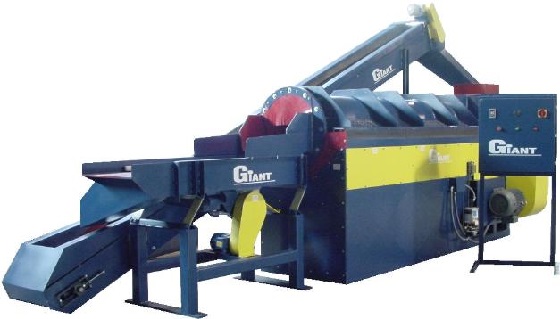
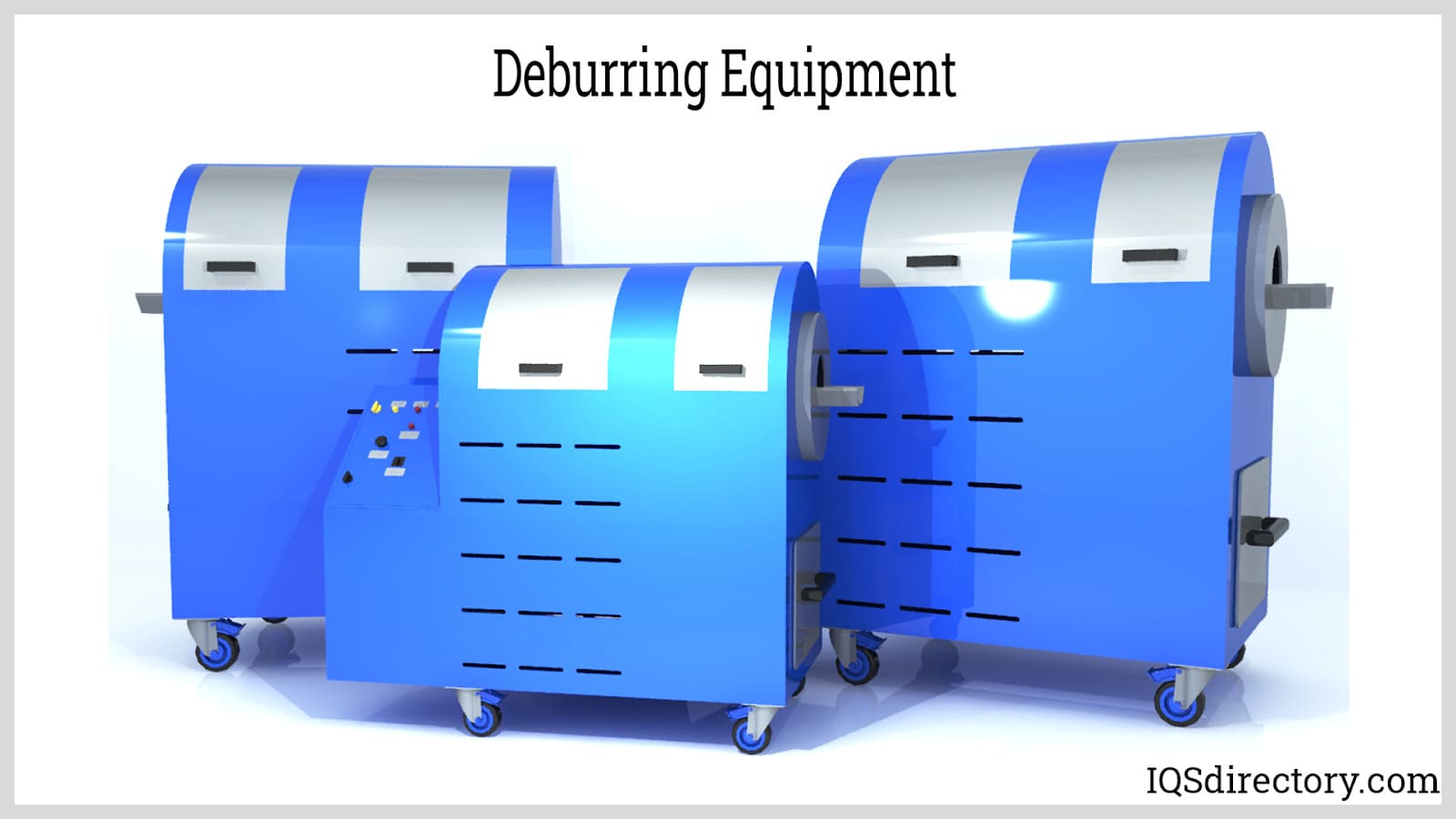
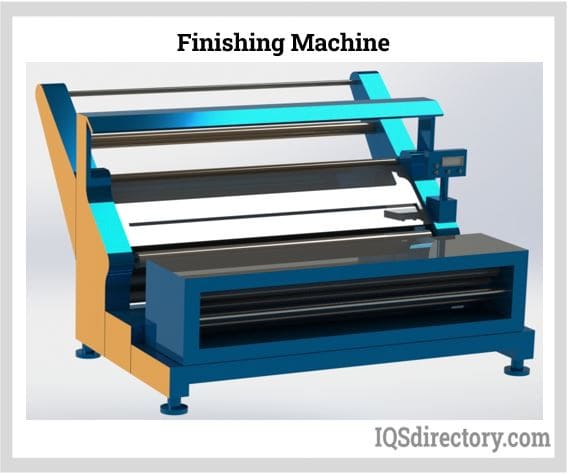
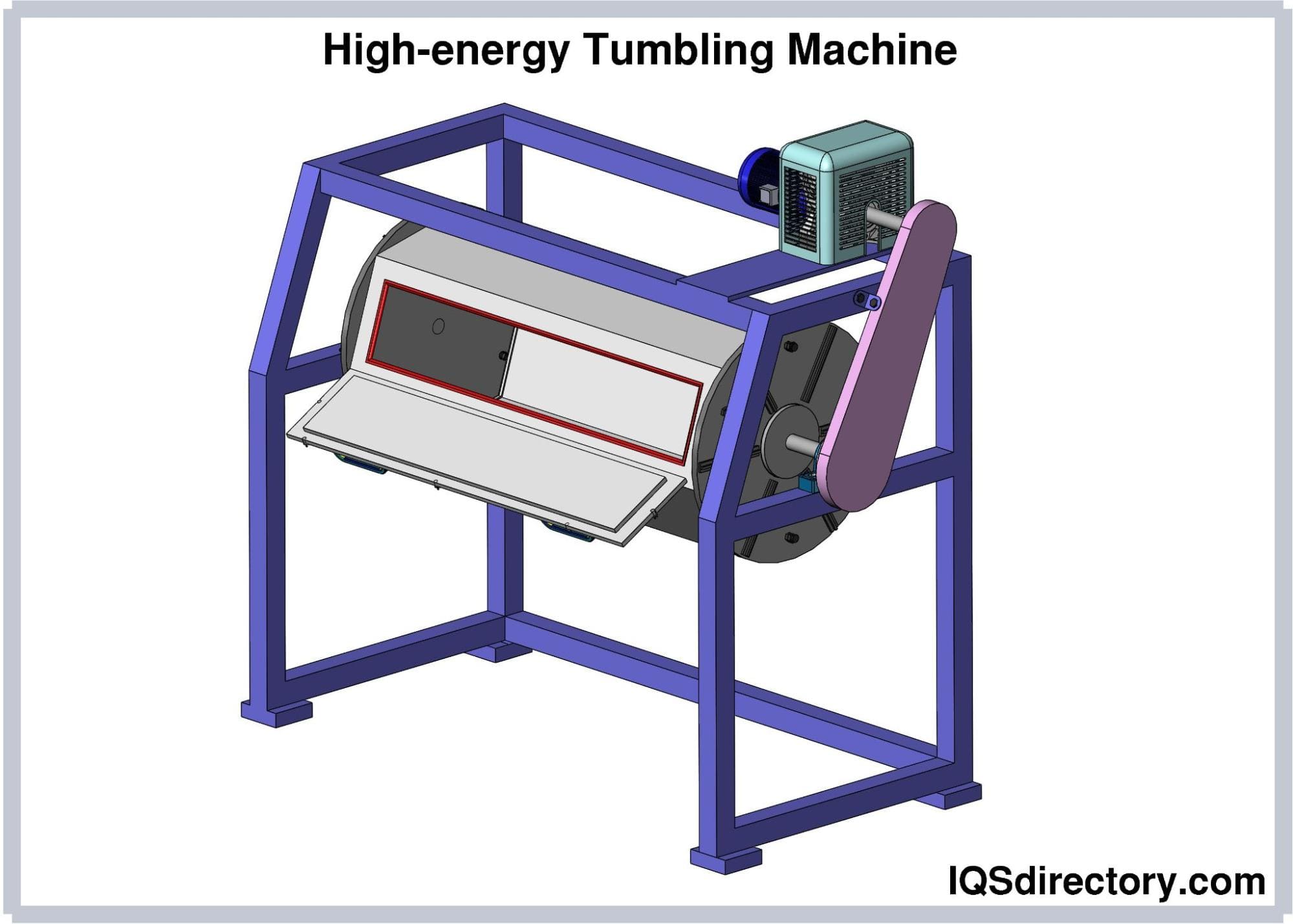
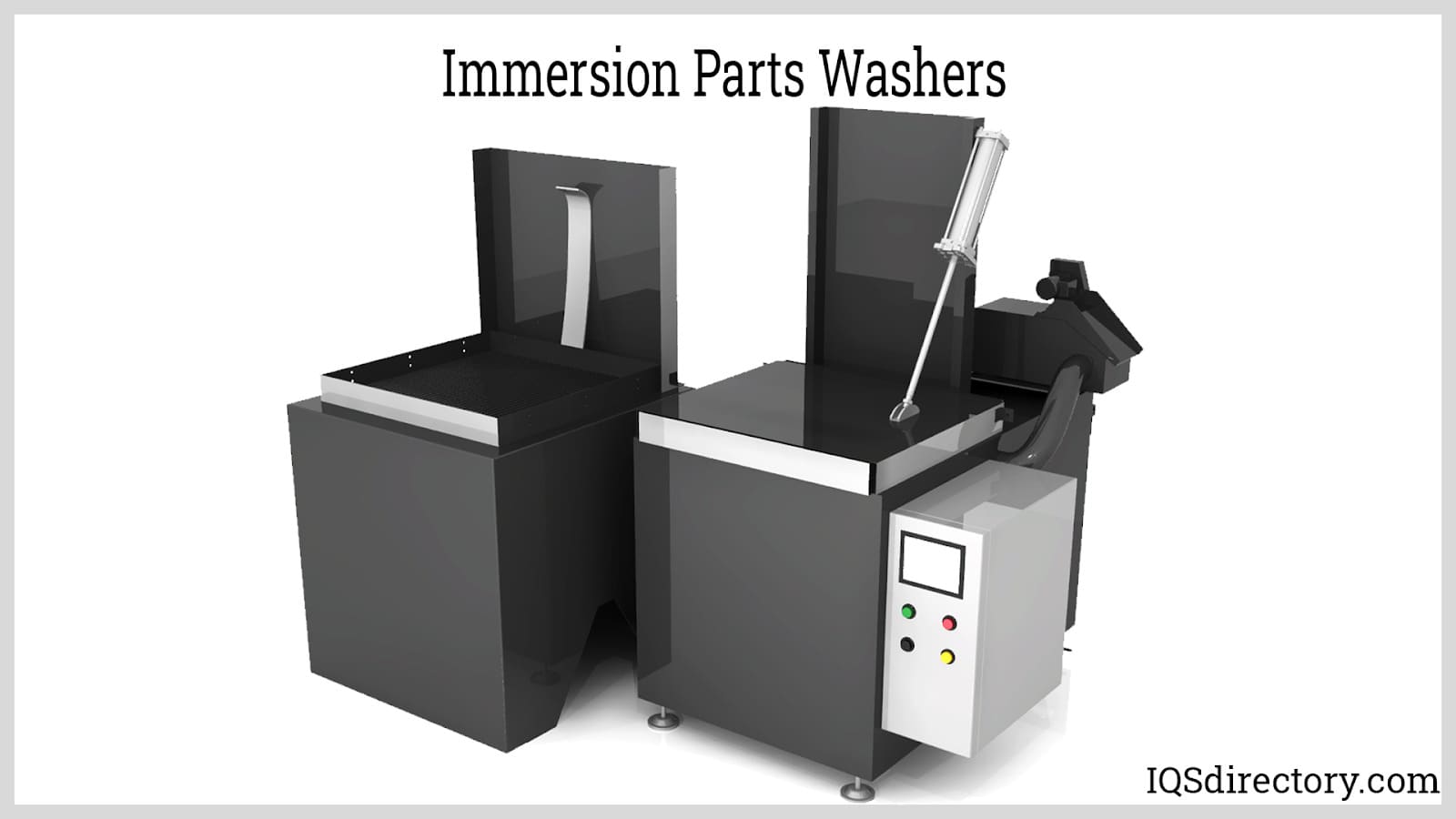
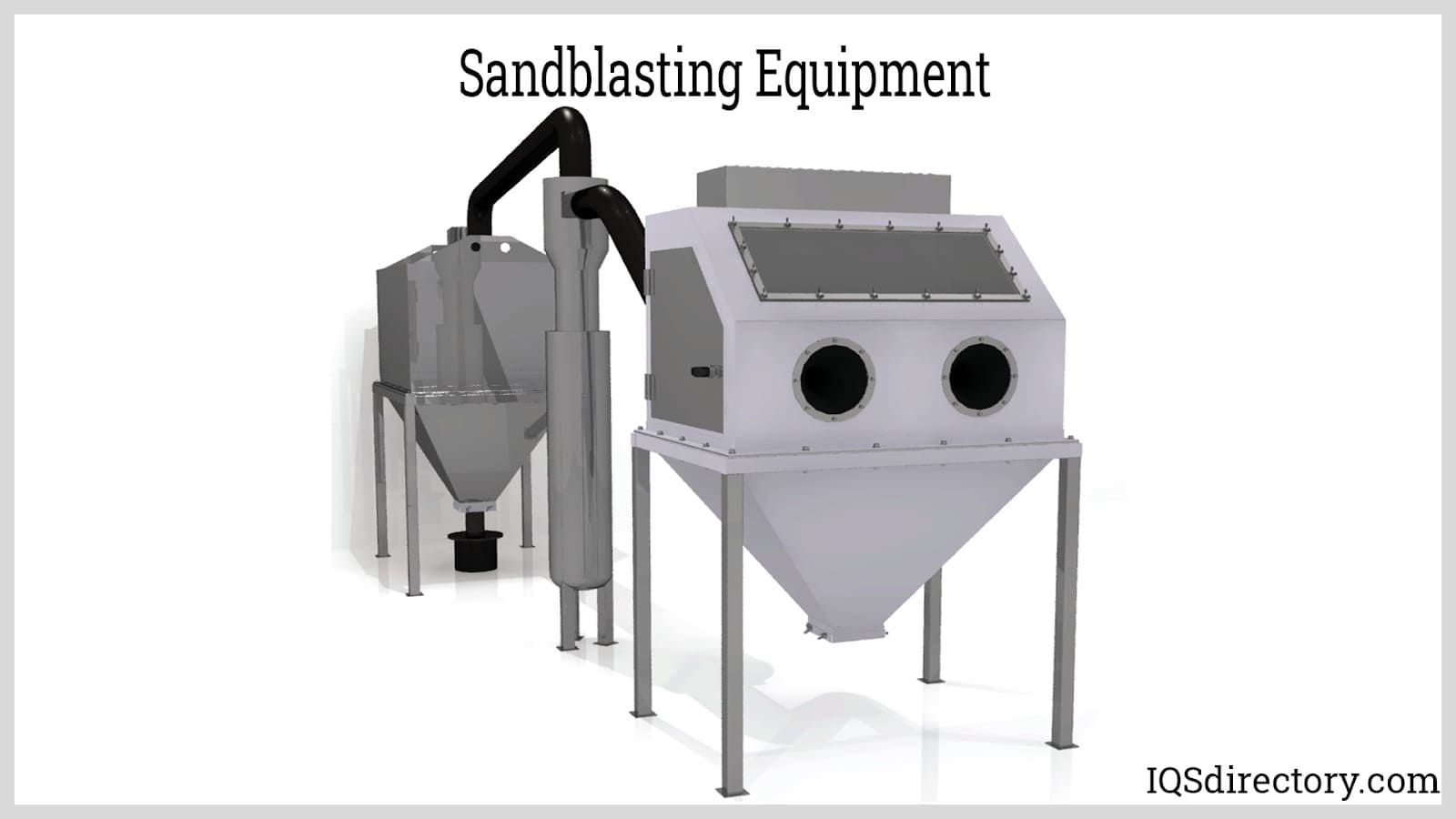
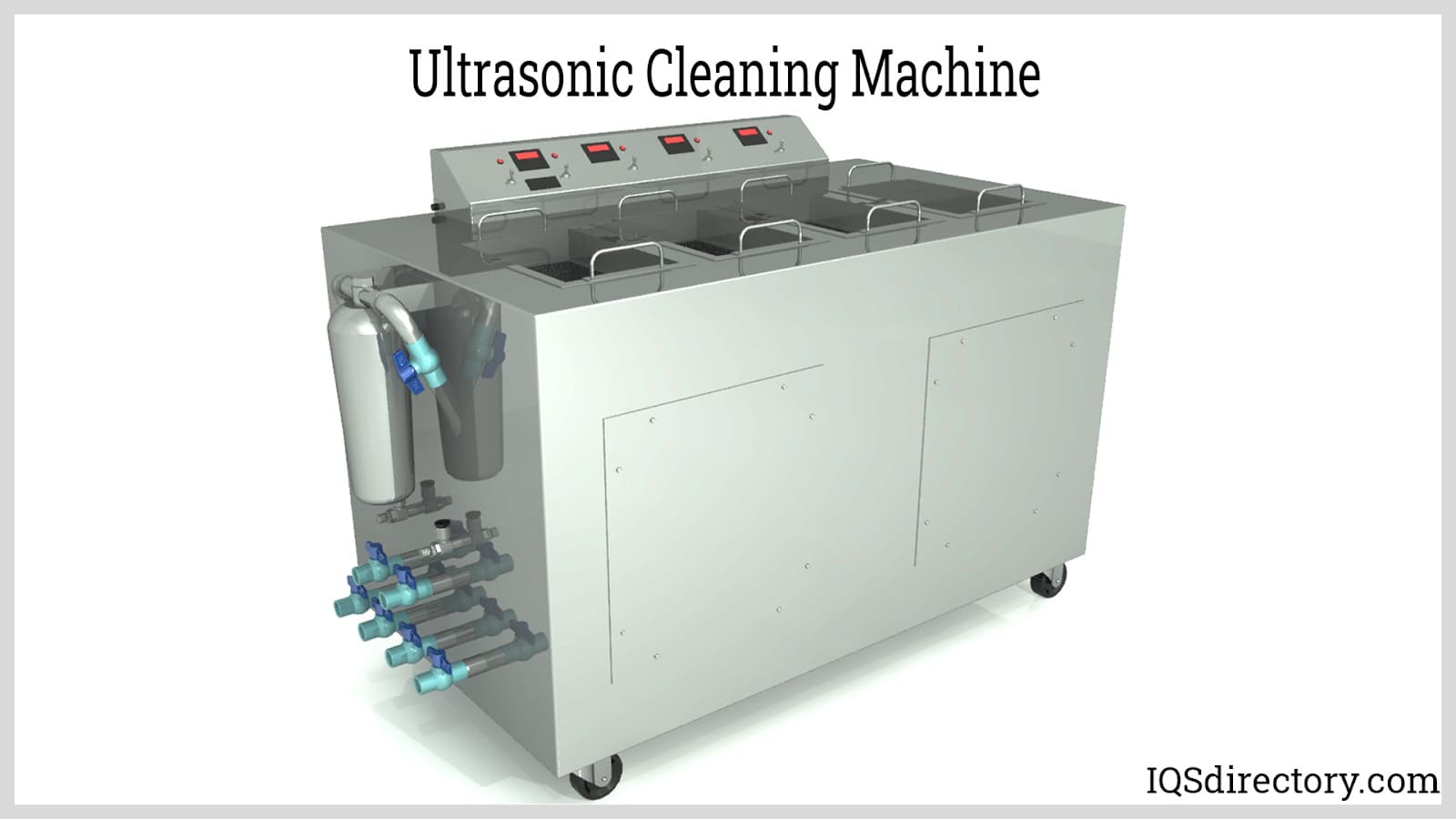
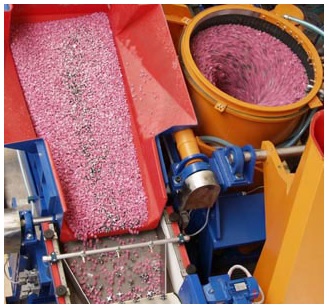 Deburring Machinery
Deburring Machinery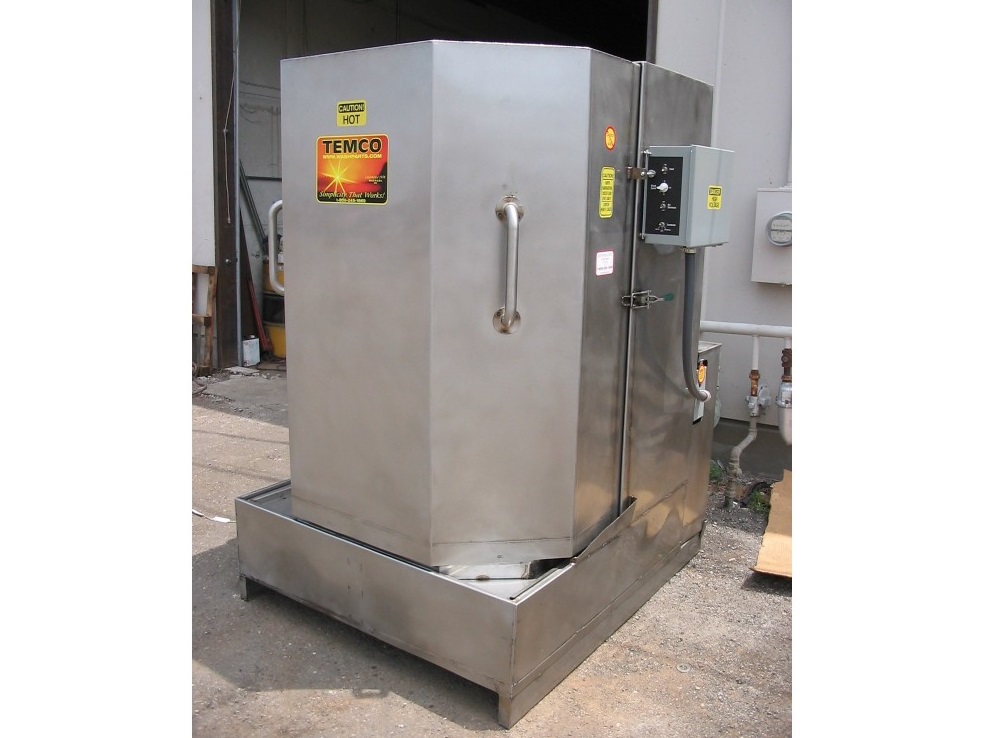 Industrial Parts Washers
Industrial Parts Washers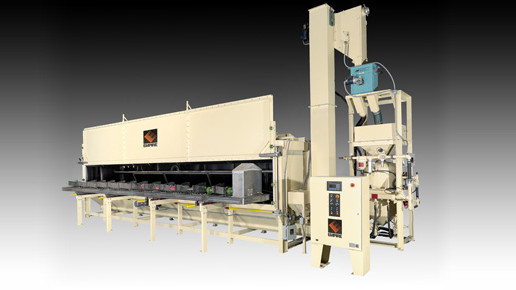 Sandblast Equipment
Sandblast Equipment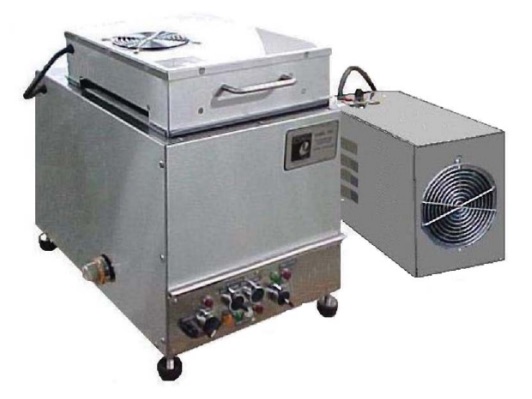 Ultrasonic Cleaners
Ultrasonic Cleaners Castings & Forgings
Castings & Forgings Bulk Material Handling
Bulk Material Handling Electrical & Electronic Components
Electrical & Electronic Components Flow Instrumentation
Flow Instrumentation Hardware
Hardware Material Handling Equipment
Material Handling Equipment Metal Cutting Services
Metal Cutting Services Metal Forming Services
Metal Forming Services Metal Suppliers
Metal Suppliers Motion Control Products
Motion Control Products Plant & Facility Equipment
Plant & Facility Equipment Plant & Facility Supplies
Plant & Facility Supplies Plastic Molding Processes
Plastic Molding Processes Pumps & Valves
Pumps & Valves Recycling Equipment
Recycling Equipment Rubber Products & Services
Rubber Products & Services